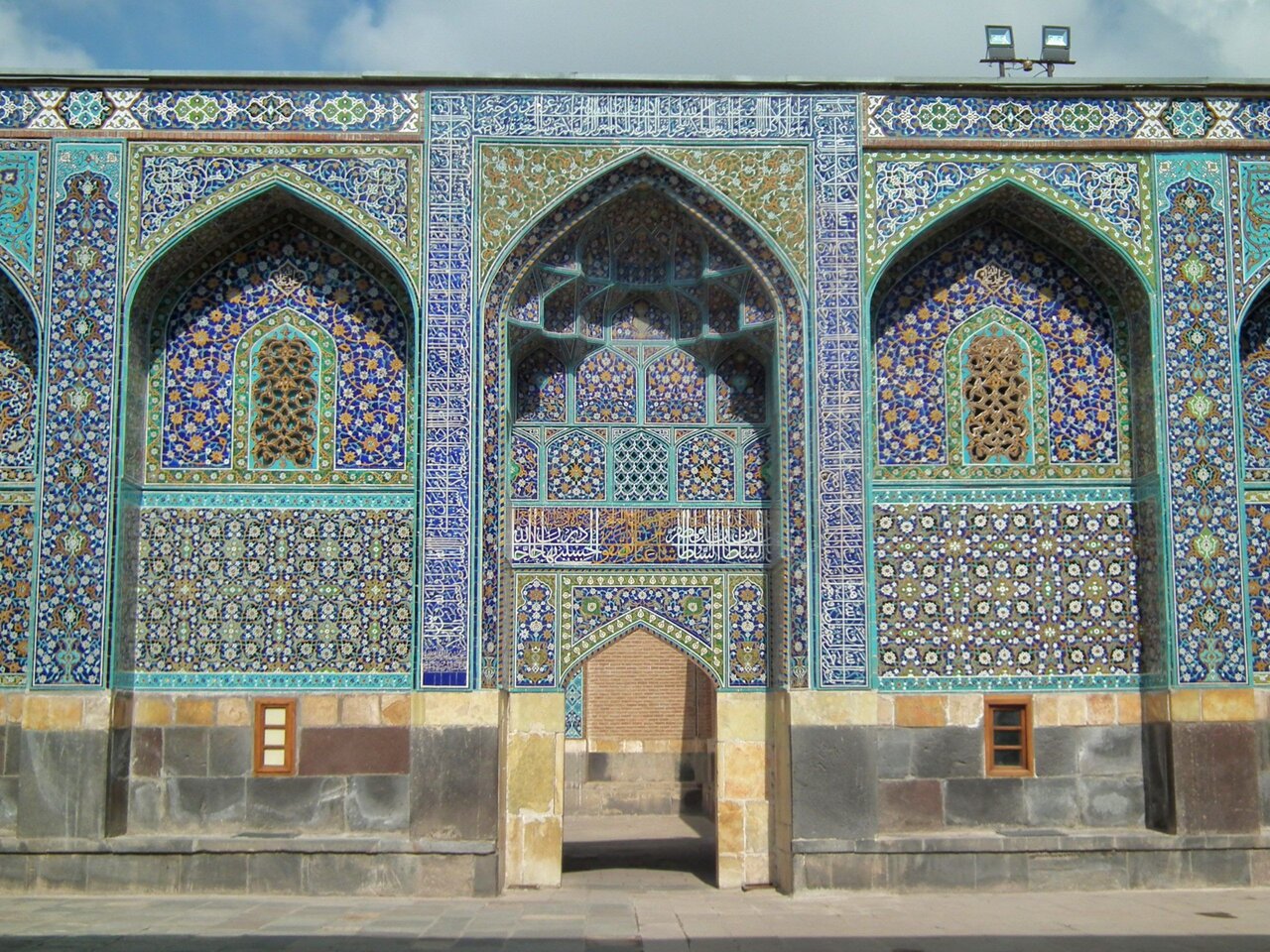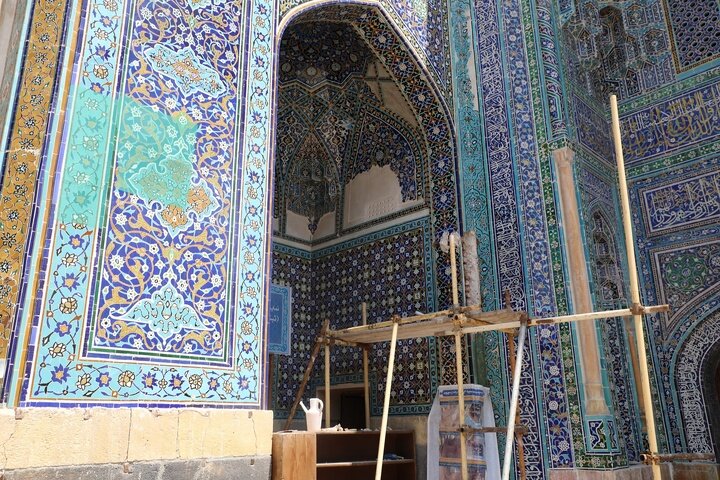UNESCO-listed Sheikh Safi al-Din Ardabili Ensemble undergoes restoration

TEHRAN – Work has commenced to restore and stabilize floral tilework that adorns the main courtyard of the UNESCO-designated Sheikh Safi al-Din Ardabili Ensemble, located in the city of Ardabil in northwest Iran.
“Restoration and stabilization of the tilework and decorations in the main courtyard has commenced in line with the ongoing restoration efforts of the Sheikh Safi al-Din Ardabili World Heritage site,” Fardin Eyni, who presides over the World Heritage site, said on Saturday.
The official emphasized: "Restoration of the tilework and decorations in the courtyard, considering that almost all the walls of this section are adorned with intricate mosaic work, requires high precision and is a lengthy and meticulous process."
“Given the vastness of the ensemble and the multitude of artifacts present, restoration work in the site is an ongoing process, and maintenance and stabilization work is constantly being done in various sections of the ensemble to preserve its allure.”

Eyni continued: "In addition, the ensemble’s roof is also scheduled to undergo restoration.”
Sheikh Safi al-Din Khanegah and Shrine Ensemble is a microcosm of Sufism, where arrays of harmonious sun-scorched domes, well-preserved and richly-ornamented facades and interiors, and, above all, an atmosphere of peace and tranquility have all made a must-see stopover while traversing northwest Iran.
The ensemble is named after Sheikh Safi al-Din Ardebili (1253–1334), who was a Sufi philosopher and leader of Islamic mystic practices. It embodies the essence of Sufi traditions by having a microcosmic ‘city’, which embraces a mosque, a madrasa, a library, a cistern, a bathhouse, kitchens, and a hospital, as well as religious houses amongst others. The place also boasts a remarkable collection of antique artifacts.
Developed between the early 16th century and the end of the 18th century, this place of spiritual retreat enjoys the principal elements of traditional Iranian architecture to make the best use of the existing space for accommodating various functions.
AM
